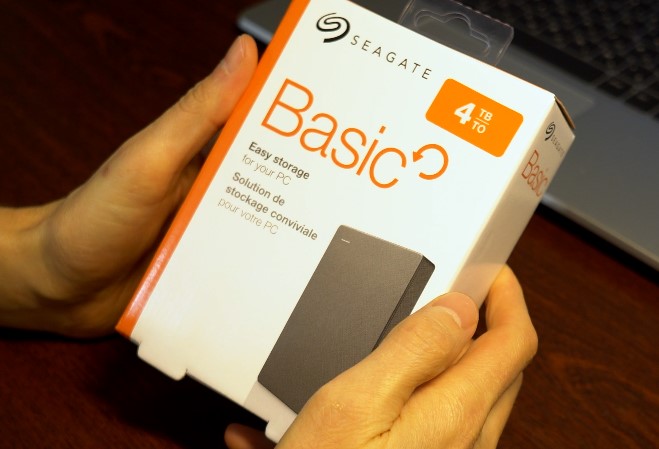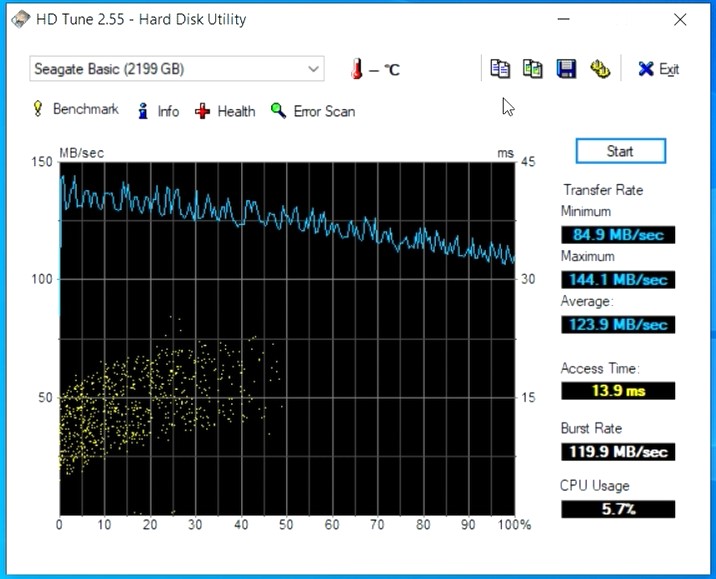I bought a Seagate 4 TB external hard drive, which I tell you about.
This is an ordinary hard drive of the basic series. It doesn’t have any special technology or features. Made and assembled in China. The official warranty for it is 2 years, although I think that for an external drive it is not enough, usually a warranty of 3 or 5 years.

Let’s start unboxing:
- In the box, the drive is additionally placed in a protective plastic packaging
- There is documentation upstairs: terms of use in Australia, warning and compatibility information
- In the upper section of the tray there is a Micro USB 3.0 cable about 30 cm long
- HDD itself is in a protective film.
Unlike the BackuPlus version, it is made of black plastic. The difference between the BackuPlus series is most likely in the material of the case, because it is aluminum there.
HDD has a straight brick-like shape. The basic information is indicated on the sticker:
- Model name
- Capacity
- Serial number
- Place of manufacture and date

I should note that the case is very delicate, and any movement instantly leaves a micro-scratch, even due to jostling on the table, I’m not talking about transportation in a backpack without a fabric case, that is, the case is quite vulnerable.
Before starting the testing, I want to note that with a view to the year 2024, its physical dimensions are too large, I expected that it would be smaller in thickness, but there is something, because the model itself was announced in 2021.
Ok, let’s go to the connection and testing. The connection is made via a Micro USB cable without additional power. To achieve the maximum speed, you should use the USB 3.0 port

For testing, I will use the Crystal Disk Mark program. Using the default settings, we start the test. The results of reading and writing correspond to the declared manufacturer, so the result can be considered positive.

Also, I decided to repeat the test only in another HD Tun program, where the graph and data transfer speeds and access time are displayed in the benchmark section, in general the result is also satisfactory. This is the end of the testing.

This drive now costs around $120. Today, for such money, you can buy an external SSD with a capacity of 1 terabyte. I’m currently using it as an external drive to back up home content, so speed isn’t the most important thing for me.
My unboxing video available on YouTube (Ukrainian langiuage)





